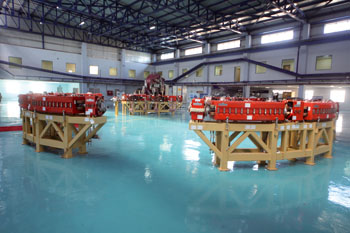Using AI to control energy for indoor agriculture
30 September 2024
Published online 16 May 2017
The Middle East’s synchrotron opens today in Jordan, signaling the start of one of the region’s top collaborative research projects.

© CERN
The Synchrotron-light for Experimental Science and Applications in the Middle East (SESAME), in Allan, Jordan, is a “third-generation” synchrotron light source modelled on Europe's CERN. It’s an upgrade from an older model—refurbished components from Berlin's BESSY1 serve as injectors for SESAME's new main ring.
The light source is now capable of delivering energies of 2.5 gigaelectronvolts.
The cooperative venture between scientists and governments of nine countries is expected to foster collaborations across the region.
SESAME endured despite construction budget gaps, wavering commitments, and even assassinations (one of the Iranian scientists who participated was killed by a car bomb in Tehran).
It fired its first beam last January.
The synchrotron uses electromagnetic radiation emitted by circulating electron beams to study different properties of matter.
It’s one of the Middle East’s first major international research centres. Tooted as an excellent example of using pure science to build scientific capacity, it’s also expected to boost research in areas such as biology, medical science, chemistry, physics and materials science between regional neighbours.
The following portfolio of stories published in Nature Middle East and Nature magazine complete the picture of a project that is using science to promote peace in uncertain times.
doi:10.1038/nmiddleeast.2017.85
Stay connected: